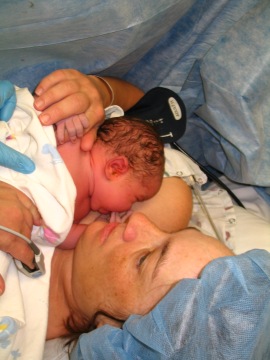Several of you have asked me to let you know what Denny has to say about this. He’s emailed Emme and she’s shared that message. Today Denny and I were able to talk on the phone and he’s asked me to share these primary points:
There were no bad outcomes.
There has been no sanction of practice.
Hudson Hospital participated in a policy review on nursing care and some physician practice policies. The good birth outcomes supported by Dr. Denny, his nurses and colleagues were not included in the decision made following a recommendation Hudson Hospital instituting strict policies. Water births for instance will have many more restrictions. VBAC women will have continuous monitoring with OR staff in house.
Newborns will be given all tests and procedures.
The reason breech vaginal birth is suspended is because not all the physicians in Denny’s group agree to his attending VBB. The review board recommended to stop breech birthing until all the physicians agree to reinstitute VBB. The strategic public letter sent out by Hudson on the 7th of
March also mentions refusal of homebirth transports.
Denny informs them that refusing a patient at the door is illegal. But even if a homebirth family comes in, I noted, and as the letter describes, the new Hudson policy is to refuse patient informed consent and informed refusal. The letter implied physicians want to do everything they can for the mother and babies, regardless of family choice, this is implied in the letter.
Denny is concerned about patients’ rights to choose between interventions and procedures that have conflicting data and, thus, no assured result. So that if a woman declines an antibiotic for GBS or a cesarean for breech she should have that right since the data isn’t weighed in the favor of the intervention.
He’s not sure the administration understands the implications of instituting strict and restrictive policies at Hudson. 1/2 of Denny’s patients come from the Twin Cities. The other OBs, John Sousa and Alissa Lynch (sp) receive an overflow of his patients, and the Pediatricians receive a higher income simply because some of the group income is shared among them. Everyone there has benefited from the family-friendly care that has been given at Hudson Hospital. Dr. Hartung’s presence has benefited Hudson Hospital greatly.
Denny will hope to care for women having Breech, VBAC and/or Twins at Woodwinds now. (If I may, this seems to be an inconvenience for him, but a benefit for us in the Twin Cities!)
Denny also asked, with deep sincerity, please don’t make your social network initiative about him, he said this is about women’s right to informed care and how policies not based on evidence based care or the parent’s choices disrespect women and families.
Robbi Hegelberg asked in the letter to area homebirth midwives and birth centers for questions to be directed to her at 715-531-6012. I suppose they will also see it after they project their 2013 income and then find that without Denny’s right to practice evidence based care that their patient numbers will drop dramatically. (That’s a little personal note!)
Dennis Hartung will continue to work at Hudson Hospital while increasing his presence at Woodwinds Hospital in Woodbury to meet the needs of his patients living in the Twin Cities area.
Dr. Hartung welcomes families to his care in Woodwinds, and Jeanette Schwartz, Lead Nurse at Woodwinds is happy to welcome him to come there more frequently. Laura France is the Director of Obstetrics. At Woodwinds, each Doctor makes their own practice decisions, as he understands it at this time. FYI, Denny doesn’t practice at Regions or Joe’s.
Please don’t say things that might give Hudson any reason to sanction Denny Hartung for libel. (I know you won’t.) That’s important because it could very well come back on him, and this insight is not coming from me. I know you will be fair without name calling or blaming. Robbi and the other board members need to hear why we won’t be referring hospital birthing parents to Hudson any longer, that refusing informed consent and informed refusal is in violation of a woman’s right as a patient and as a human being, and I could go on, but I’m staying diplomatic here. Volumes of mail, calls, emails, and social network posts will make a difference. For those of you inclined, please say prayers, send victorious thoughts and/or light candles for Dennis Hartung. Denny very much appreciates this support from the community and in return he, too, is devoted to all of us, serving the birthing community with all his heart.
Kandace in Lakeville


